The road to Saint Brieuc
By Iain MacInnes
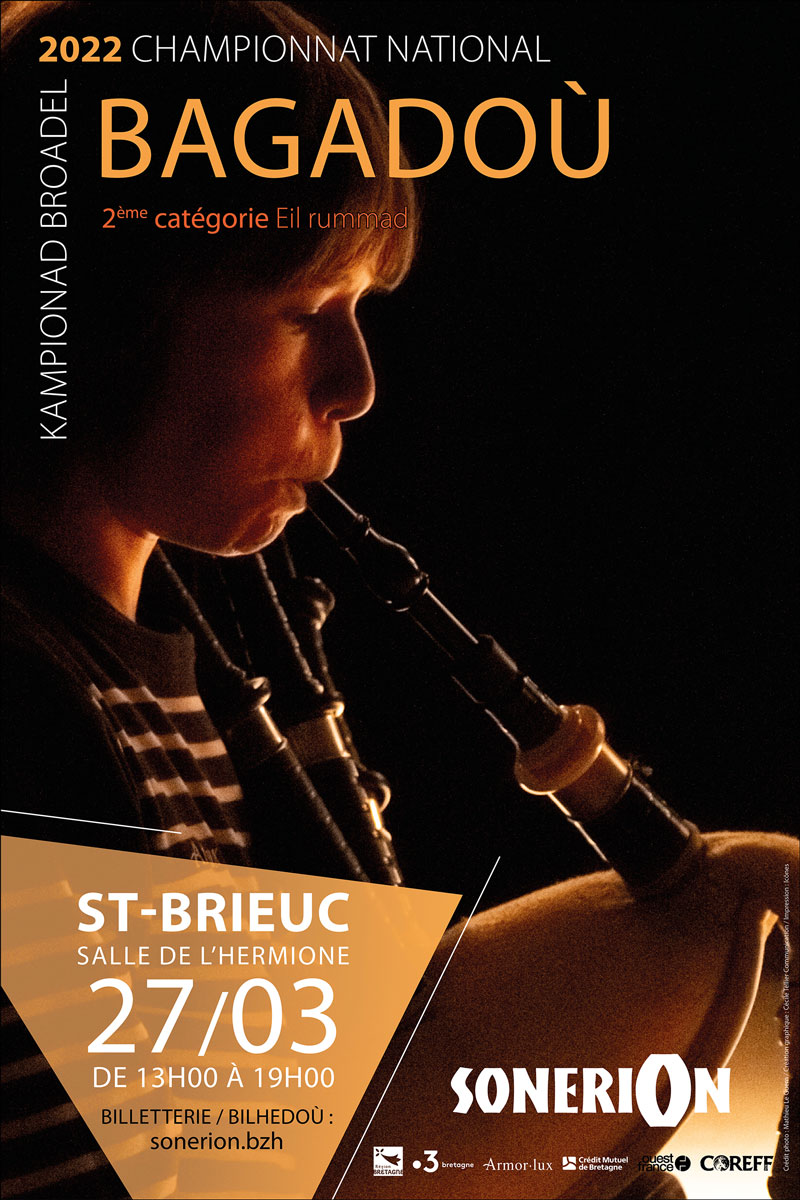 On the grounds that the best way to understand a musical culture is to take part in it, I found myself in late March this year driving through the early morning mist out of Quimper in Brittany, heading north to Saint Brieuc to play in the Breton Pipe Band Championships.
On the grounds that the best way to understand a musical culture is to take part in it, I found myself in late March this year driving through the early morning mist out of Quimper in Brittany, heading north to Saint Brieuc to play in the Breton Pipe Band Championships.
More accurately, this was the first of two legs of the championship (the concluding part being in Lorient in August), and the event was specifically for Grade 2 bands. Other grades play on different weekends throughout late-February and March, in different locations, and in this way the event reaches a wide audience, housed comfortably indoors in good venues.
As a newcomer I was very fortunate to be playing with Bagad Penhars from Quimper, one of five bagadoù based in the city of Quimper in southwest Brittany (others include Bagad Kemper and Bagad Ar Meilhoù Glaz), and a band with strong recent experience of playing at the top level. For me their music was definitely challenging, but packed full of excitement and energy. It wasn’t all easy to play, by any means, but the experience of standing amongst the pipes and bombardes and a very strong percussion section, was wonderful.
I should explain that my route to playing with Bagad Penhars was through another Breton band called The Piping Orchestra. This is a non-competitive band that focuses on concerts and street parades, and which is a member of the Bagad Penhars Association. Four of us from the PO (Gilles Houez, Rod Hudelot, Tom Lewin and myself) were pleased to accept an invitation to play with Penhars at the Saint Brieuc competition.
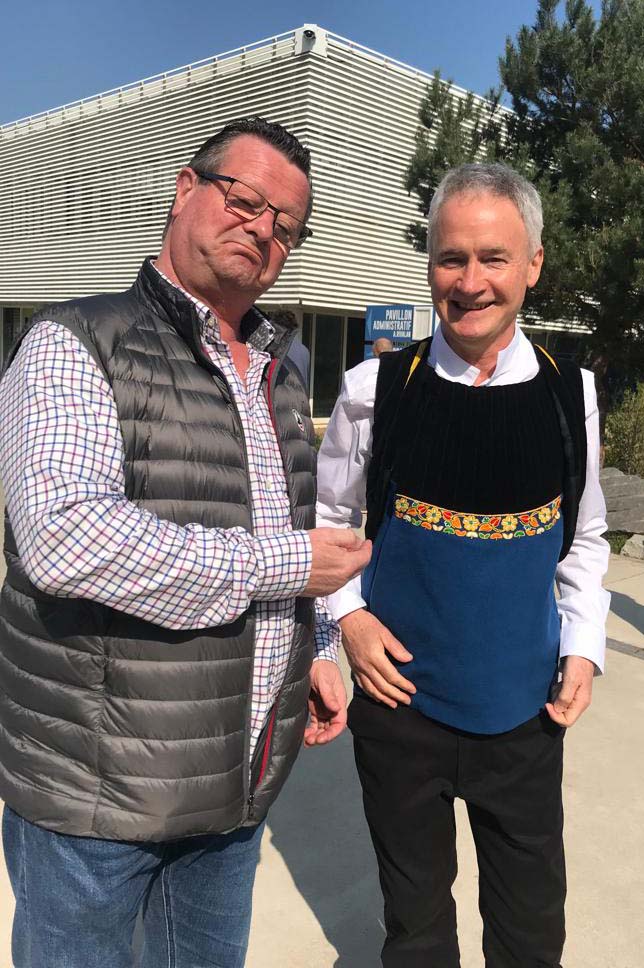
Not surprisingly, there has been a steady trickle of players from the UK, Ireland and North America making their way to Brittany over the years, lured by the sound of the Breton bands and the distinctive sonority of their instruments. This is music which can be handled comfortably by players raised in the Highland piping tradition, but there are key differences which need to be taken into account.
For one thing, the bands themselves are more complex than our own, featuring four main sections – bombardes, bagpipes, drums and other percussion. The music is largely built round the bombardes (mouth-blown instruments using double reeds), with the pipes taking a supporting role. Since the late-1940s when the bands took root, the “cornemuse ecossaise” (the Scottish bagpipe) has been the preferred instrument for pipe sections, although the traditional, high pitched, binioù kozh also has a place in performances. Snare drums are of a type familiar to our own pipe bands, and these are supplemented by a wide range of percussion instruments including, in the case of some of the best bands such as Bagad Cap Caval, steel drums.
The annual championship is split into two legs, each with a distinctive repertoire.
The Spring competition requires bands to play music from a particular region of Brittany. In our case, playing in Grade 2, we were allocated music from Grand Vannetais – Basse Bretagne (the hinterland to Lorient), and the band included in its performance a Laridé du pays de Baud and a Gavotte de Pourlet, as well as a couple of slower “mèlodies.”
Different grades play music from different areas each year, in rotation, thereby reinforcing links with the distinctive song and dance cultures of each region. To achieve this, the Breton bagad association, Sonerion, has divided Brittany into eight regions, and the allocation for the annual “territoire determine” has been decided until 2026. The annual “prix terroir” is much valued, and this year was won at the Grade 2 competition by the very experienced Bagad Sant-Nazar.
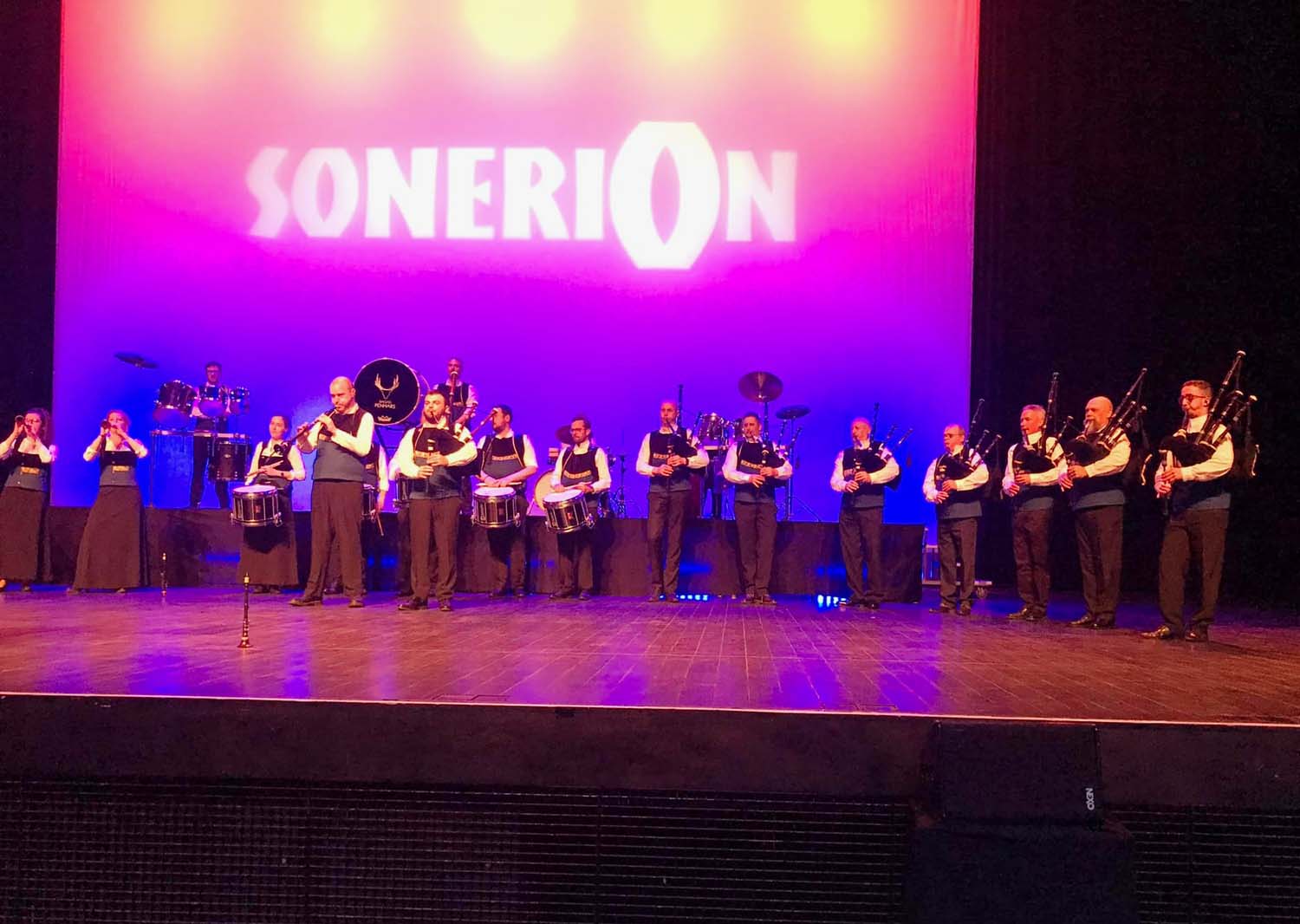
The Summer contest is less prescriptive, and simply calls for a program of Breton music lasting up to 12 minutes for the Grade 1 bands, and slightly less for the other bands. This is held in the football stadium in Lorient during the annual Festival Interceltique de Lorient, and is a major event attracting large audiences. The overall champion for the year is determined by the aggregate scores over both the Spring and Summer contests. (A complication for Grade 1 this year is that their Spring contest was cancelled due to COVID, so everything now hinges on the result at Lorient).
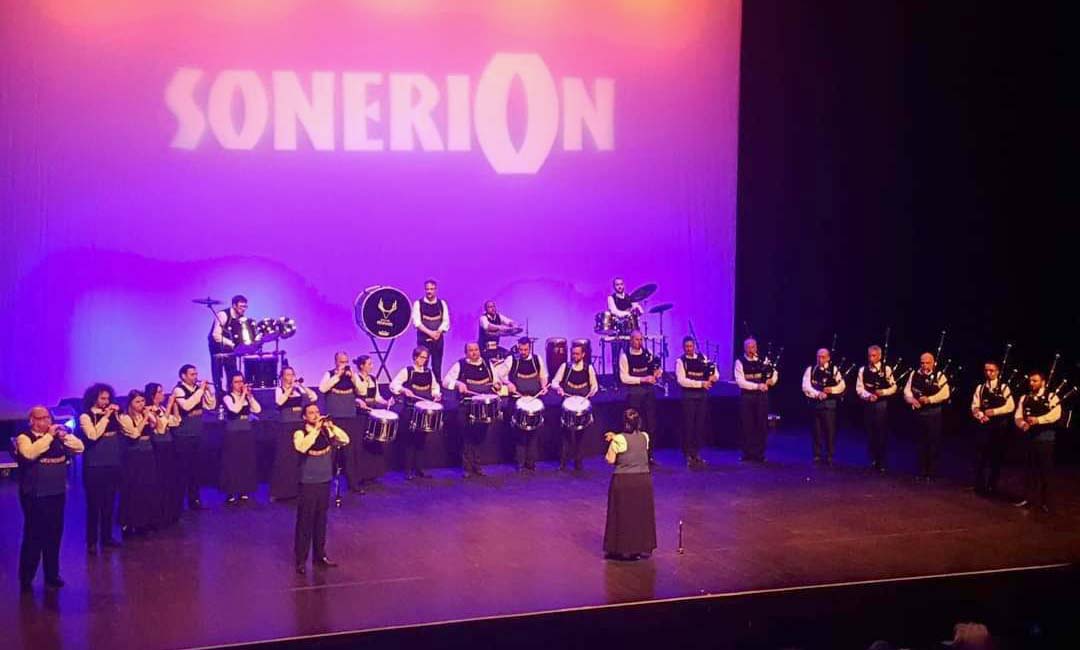
With the competition season looming, Tom Lewin and I travelled to Quimper in early March for a weekend of rehearsals with The Piping Orchestra and Bagad Penhars. Song and dance go hand-in-hand in Brittany, a point which was brought home in a talk by the regional dance expert Alan Pierre, who attended the Bagad Penhars rehearsal. The aim here was to give band members a grounding in the Laridé and Pourlet, and by the end of the afternoon Alan had us dancing a Laridé, pinkies at a jaunty angle, while he both sang and led us through the steps. These links between music and dance run deep, and in fact a number of well-known bagadoù, such as Kevrenn Alré from Auray, incorporate dance troupes within their organizations.
Dance steps are one thing, but there is also the question of setting-up the instruments. For this competition, Penhars were using “do” chanters made by McCallum Bagpipes. “Do” in this case is a reference to B on the scale (as in the tonic sol-fa), which becomes the keynote. The drones are tuned to B, meaning that there are two notes to play with below the keynote, an A and the bottom note which is F# rather than G. (This is achieved by having only one sound hole on the chanter rather than two.)
The drones are slightly shorter than standard Highland pipe drones (we were using a mixture of McCallum and Botuha drones), and the chanter reeds were by G1 from Fife. I was impressed by how quickly the sound came together, and how pleasant it was to play instruments that, although sounding quite different, didn’t feel radically different under the fingers. A final bit of mental re-adjustment came with the need to work out how to play an accurate G#, which featured in one of the mid-tempo tunes, and we were up-and-running.
This was probably the fastest that I’ve played since I was in my twenties, but I found that by totally relaxing the fingers on the chanter and not worrying too much about the occasional lost gracenote.
The band leader (penn-soner) at Bagad Penhars is Nolwenn Sergent. Nolwenn is an excellent bombarde player, but in fact spends most of her time in both rehearsal and performance conducting. For the actual performance the band faces the audience in concert formation (no backs turned here), and the music is highly dynamic. Simple pipe and bombarde duets give way to strong percussive passages and sections in which everyone is playing full-tilt, the pipes often mirroring the bombardes, and sometimes playing an octave lower.
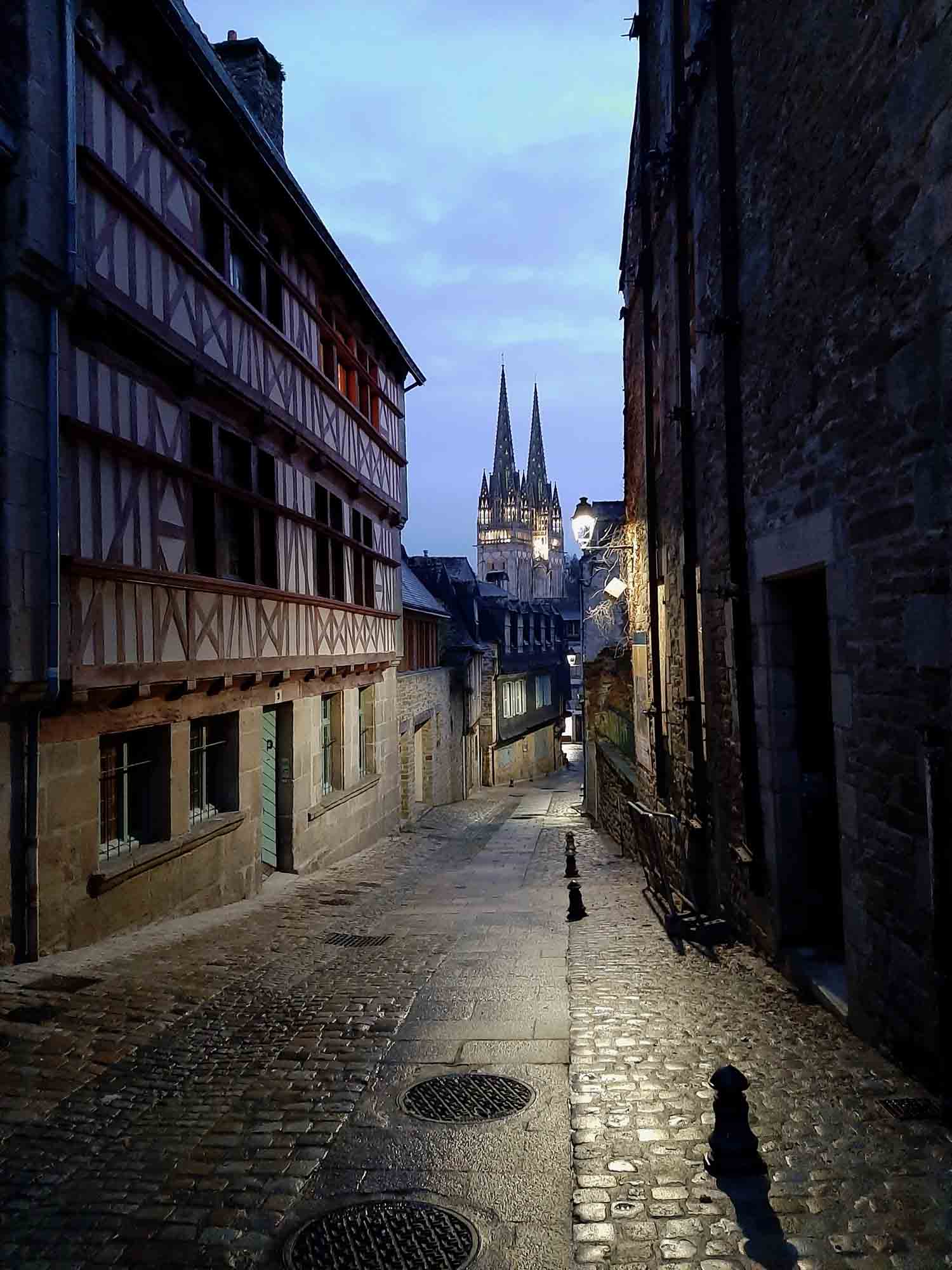
In many ways it’s quite orchestral, and a lot of time and effort goes into constructing a good suite, which for Grade 2 bands lasts 10 minutes. On this occasion Tristan Jarry, the pipe-major (penn-cornemuse), looked after that side of things, working closely with Nolwenn and lead-drummer Mickael Galeron. Music for the Pourlet arrived in January, and the other tunes by the beginning of March, time enough to learn them, but definitely not time to get bored with playing them (the competition itself was on the 27th ). Tristan, incidentally, is a great young player who is also a member of the professional French Navy band Bagad de Lann-Bihoué. For those interested in Breton music, his is a name to look out for.
Nolwenn and Tristan favour a brisk style of playing. If I’m being honest, I would say that this was probably the fastest that I’ve played since I was in my twenties, but I found that by totally relaxing the fingers on the chanter and not worrying too much about the occasional lost gracenote, I could get into the swing of it without too much bother. The gracenoting itself is largely familiar, with one or two minor differences such as a tendency to put a gracenote after a strike to low A, rather than before it as we would in the Highland tradition.
Interestingly, the notes on the scale tend to be referred to using sol-fa, so a D, for example is “Mi,” and high A is “Si Aigue.” This took a bit of getting used to, but other than that I wouldn’t say that there was any difficulty in communicating the music. Singing will get you a long way! There is of course a full vocabulary associated with the instrument: your drones for instance are “bourdons“; your reed is an “anche“; a single gracenote is a “détaché“; a doubling, a “double“; and so on.
Rhythm trumps technique, and the feel of the music is rewarded by the judges.
On reflection I would say that four points that I would take away from the experience are:
Have your pipes well set-up for stopping, starting and keeping the drones going without sounding the chanter. This is a big feature of the music, and in a 10 minute suite you definitely won’t be playing all the time. Using a sheepskin bag helps.
Go with the flow of the music. Rhythm trumps technique, and the feel of the music is rewarded by the judges.
Enjoy the interaction between pipes and bombardes. The high A on the chanters is often used as a sort of musical punctuation mark as the bombardes briefly cut out, and this is really effective.
Never (this is important) call a Breton “French.” You won’t be thanked for it!
I should mention that the judging system at the Breton bagad competitions is very impressive, with 12 judges for each event, three of them devoted to assessing the quality of the “terroir,” in other words, the appropriateness of the music. It strikes me that this is a tradition which embraces change without compromising the core elements of the music. For instance, bands are nowadays allowed to include other instruments in their competition performances (clarinets are popular at the moment), as well as singers and dancers. While the sound of the bands is evolving, the music itself remains well-grounded.
For those interested in learning more, the bagad association Sonerion has a very good website. This includes archive recordings, articles and competition information. And if you simply want to hear the music, you’re in luck. The major competitions are filmed professionally, and performances can be easily accessed online. You might want to start by listening to some of the famous bands such as Kevrenn Alré from Auray, Ronsed Mor from Locoal Mendon, Cap Caval from Plomeur and Kemper from Quimper, but in fact any of the top grade bands will make for good listening.
And of course, don’t forget the Grade 2 bands! Back at the contest at Saint Brieuc, Bagad Penhars was delighted to be awarded first prize at the end of a great day’s music. This is a band which includes a piper in the ranks who part-owns a distillery. The bus journey home to Quimper was lively!
RESULTS
Les classements et résultats détaillés de la première manche du championnat de 2ème catégorie des bagadoù 2022
- Bagad Penhars (Quimper)
- Bagad Sant-Nazer (Saint Nazaire)
- Bagad Elven (Elven)
- Bagad Bro Landerne (Pays de Landerneau)
- Bagad Glaziked Pouldregad (Pouldergat)
- Bagad Hiziv (Hennebont)
- Bagad Naoned (Nantes)
- Bagad Bro An Aberiou (Pays des Abers)
- Bagad Landi (Landivisiau)
- Bagad Bleidi Kamorh (Camors)
Prix terroir : Bagad Sant-Nazer
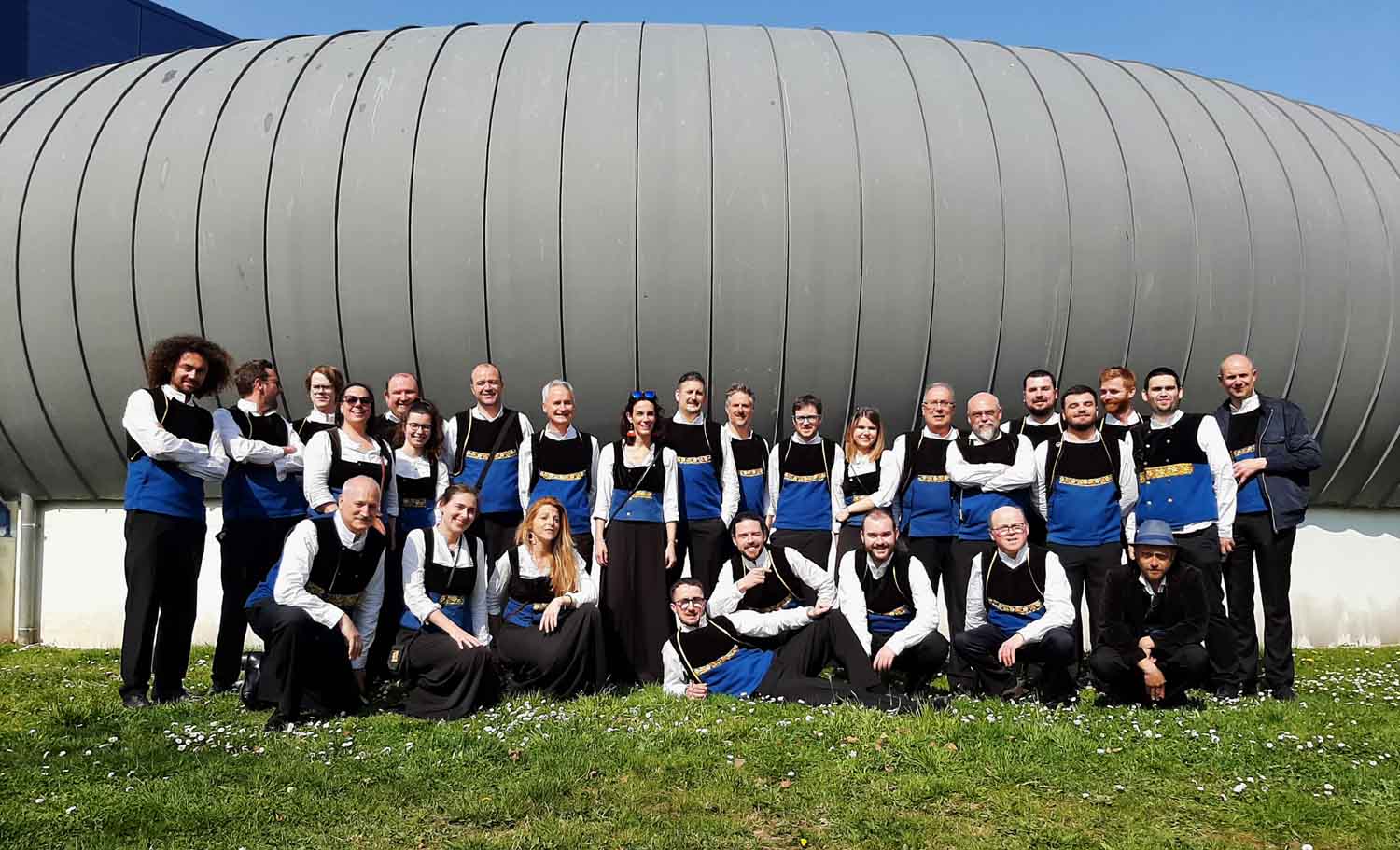
My thanks to the members of Bagad Penhars for their warm welcome, and to Catie and Gilles Houez of the Piping Orchestra for their generous hospitality. The Piping Orchestra was created in 2017 as a tribute to Gordon Duncan during the Festival Interceltique de Lorient, and includes a mixture of Breton and Scots players.
Iain MacInnes is one of the world’s most accomplished pipers. After competing with Woolmet & Danderhall and other Grade 1 bands, and competing in top-tier solo competitions, he devoted himself to performing on a variety of instruments with various Celtic folk bands, including the Tannahill Weavers, Ossian and Smalltalk. He was the presenter and producer of BBC Radio Scotland’s Pipeline show for many years, and retired in 2017. An Edinburgh resident, Iain MacInnes has been a contributor to pipes|drums since the early 1990s.

Is Gilles Troel, Jim Kilpatrick’s twin brother?
🙂